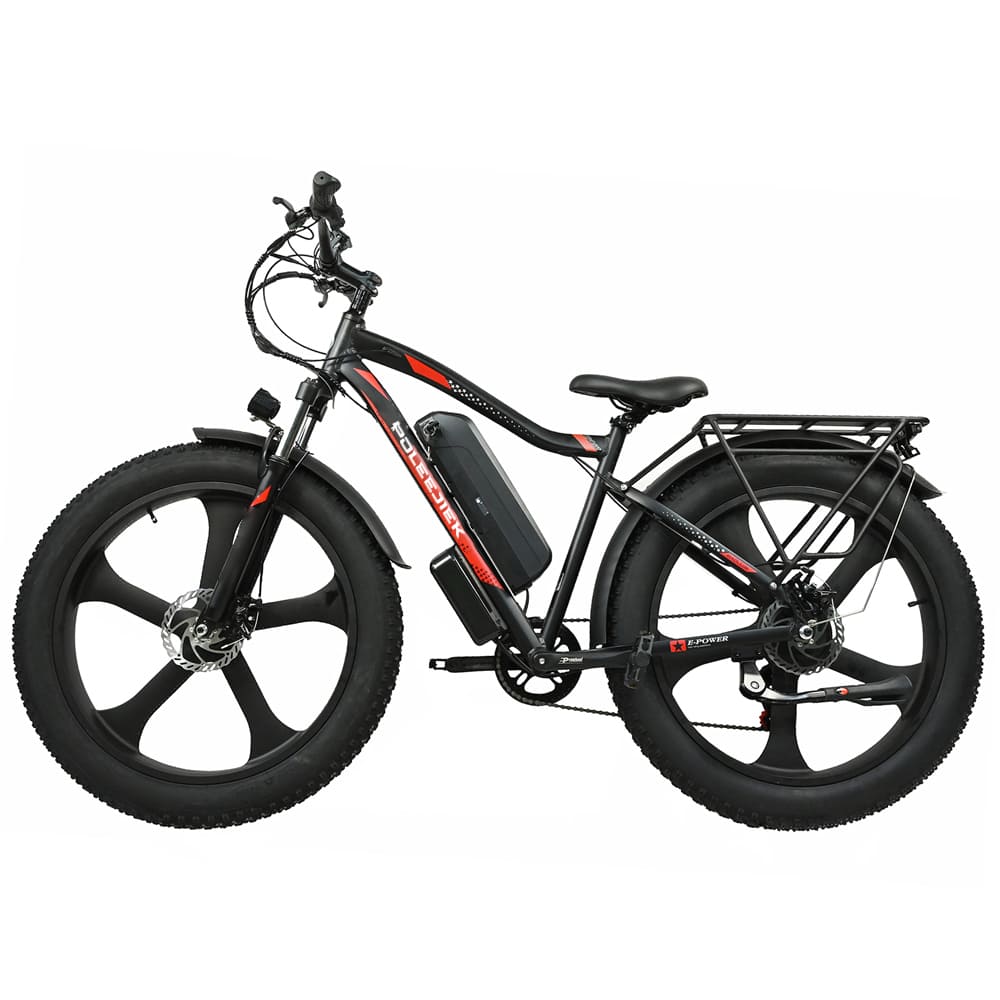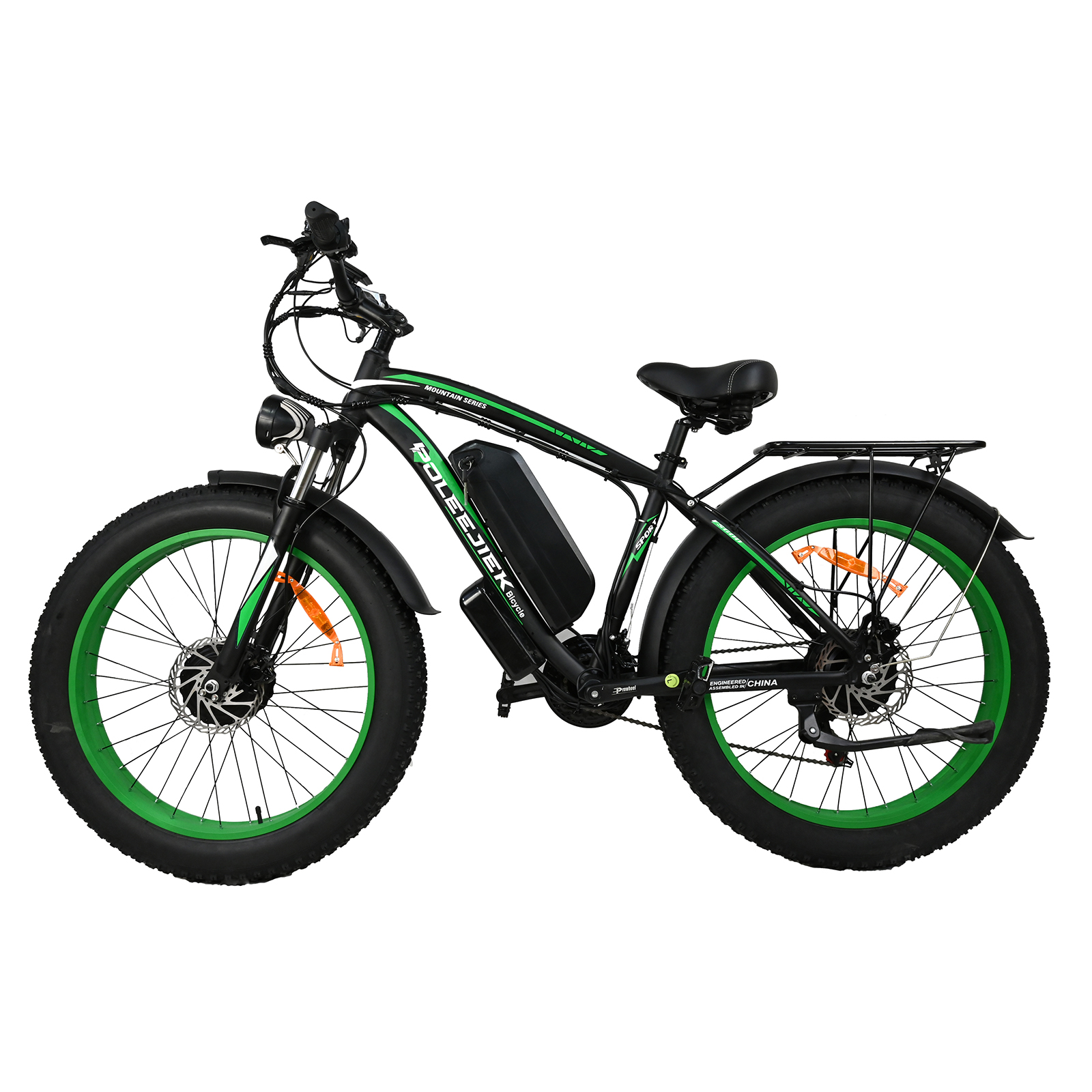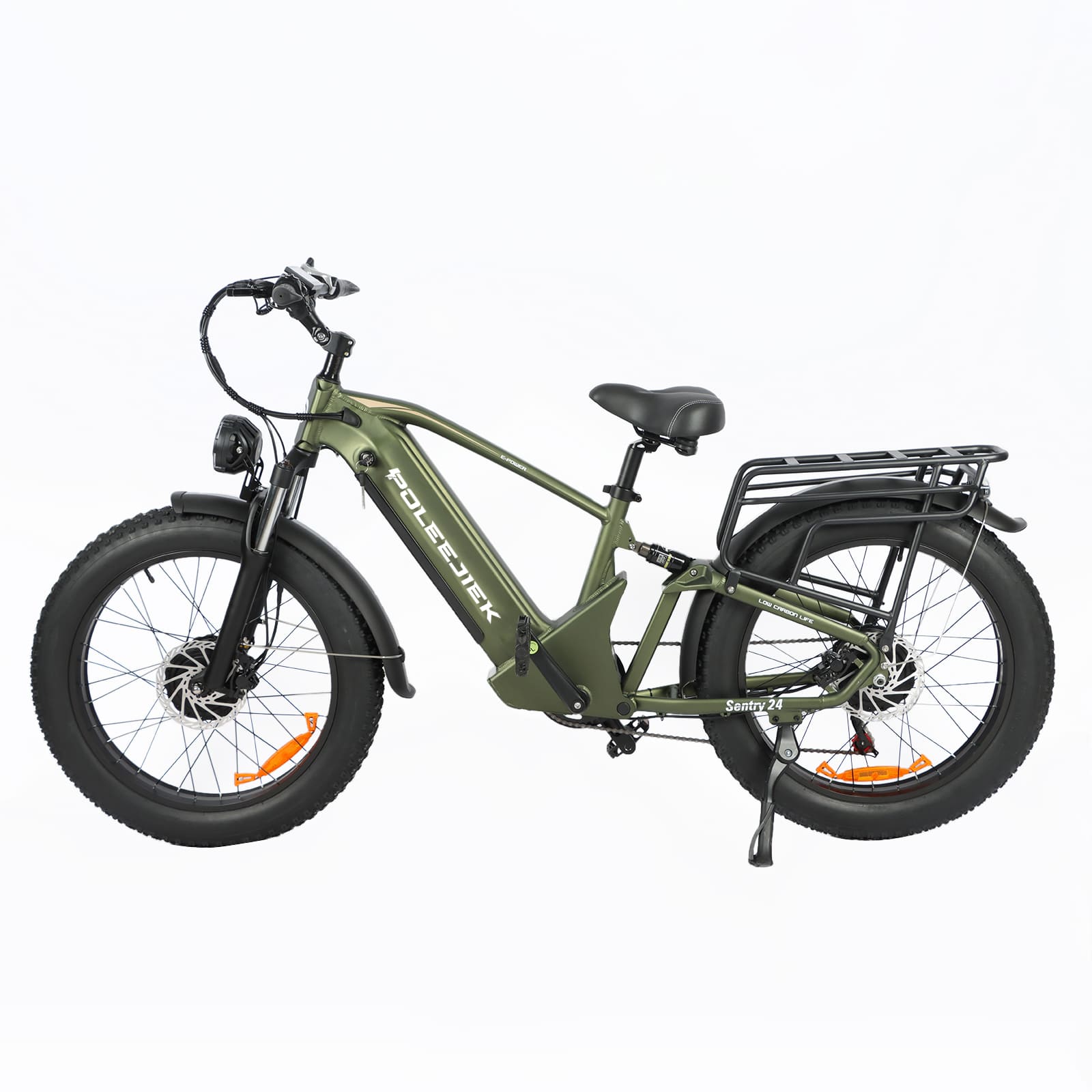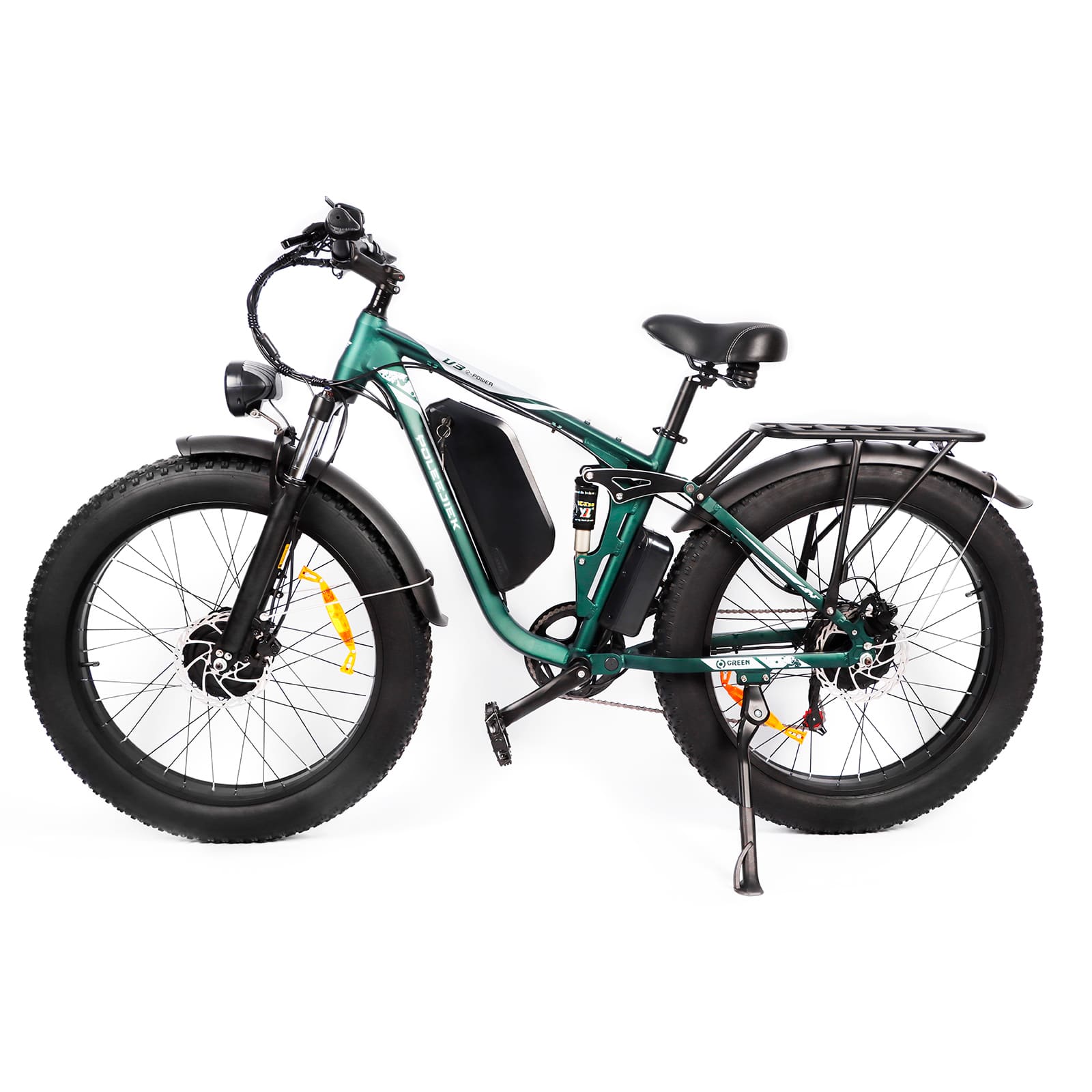Dual Motor Ebike: The B2B Dealer’s Power Guide
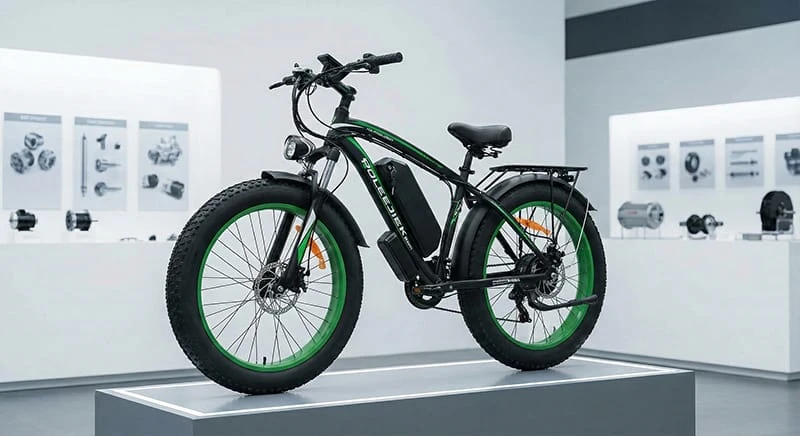
Introduction
In the current electric mobility landscape, the market is flooded with standard, 750W rear-hub commuters. For B2B distributors and OEM product managers, this "sea of sameness" creates a significant challenge: price wars. When every product looks and performs the same, margins compress.
To break free from this cycle, you need a "Halo Product"—a machine that commands attention, justifies a premium price point, and serves a specific, high-need audience. The dual motor ebike is that product.
However, we understand the hesitation. For many B2B buyers, the concept of a dual motor system triggers Pain Point #3: Fear of complexity. The prevailing myth is that "two motors equal twice the problems." Dealers worry about synchronization issues, battery drain, and warranty claims.
At Poleejiek, we are rewriting that narrative. This guide is not just about why you should stock dual motor bikes; it is a technical manual on how Poleejiek dual motor technology solves the engineering challenges of synchronization and heat dissipation. We will demonstrate how to position these high-performance machines to lock in high-net-worth clients—specifically hunters, hill climbers, and heavy-duty users—while securing your profit margins.
Who is Buying Dual Motor Electric Bikes? (Locking in B2B High-Profit Demographics)
The key to selling high-wattage, dual motor electric bikes is realizing they are not for everyone. They are not for the casual last-mile commuter. They are for users who have hit the physical limits of single-motor systems. By targeting these specific ebike niche markets, distributors can move away from low-margin volume sales and toward high-value specialist sales.
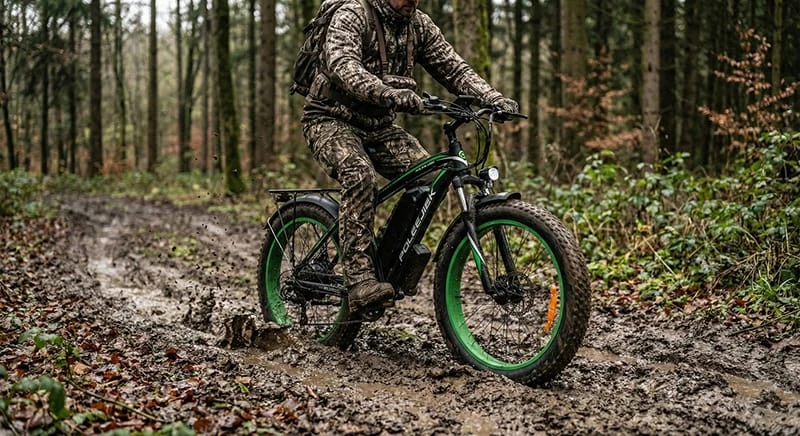
1. Hunters and Outdoor Adventurers (The Electric Hunting Bike)
The "Electric Hunting Bike" sector is currently one of the highest ROI categories in the micromobility industry. Why? Because the customer base is accustomed to spending significantly on gear that ensures success and safety.
- The User Need: Hunters operate in varied, often hostile terrain—deep mud, loose gravel, wet leaves, and snow. A standard rear-hub motor pushes the bike. In loose terrain, this often causes the front wheel to dig in or the rear wheel to spin out, losing traction. Furthermore, dragging a trailer loaded with game (which can weigh 200+ lbs) up a muddy incline is physically impossible for a standard 750W motor.
- The B2B Opportunity: A dual motor ebike provides All-Wheel Drive (AWD) capability. By powering the front wheel, the bike "pulls" itself over obstacles while the rear pushes. This drastically improves traction. Selling a 2000w electric bike to this demographic isn't selling a luxury; it's selling a necessary tool. Dealers can bundle these bikes with high-margin accessories like cargo trailers, gun racks, and heavy-duty lights.
2. Residents in Steep Terrain (Best Electric Bike for Hills)
Geography dictates demand. In regions with extreme topography—such as San Francisco, Seattle, or the Alpine regions of Europe—standard ebikes fail.
- The User Need: A 250W or even 500W mid-drive motor often struggles to restart on a 15% grade if the rider stops. The motor overheats, or the rider cannot generate enough torque to get moving.
- The B2B Opportunity: For these customers, you are marketing the best electric bike for hills. A dual motor system (e.g., 1000W front + 1000W rear) provides immediate, raw torque from a standstill. It eliminates "range anxiety" and "hill fear." For dealers in these regions, a dual motor unit is the only responsible recommendation for heavy daily use.
3. Heavy Riders (Payload and Torque Requirements)
The ebike market is becoming more inclusive. Heavier riders (250 lbs+) often find that standard motors feel sluggish or overheat under their weight combined with cargo.
- The User Need: These riders require higher ebike torque simply to accelerate safely in traffic. A single small hub motor is prone to burnout under constant high-load stress.
- The B2B Opportunity: Dual motors distribute the thermal load. Instead of one motor running at 100% capacity (and overheating), two motors run at 50-60% capacity to move the same load. This results in cooler operation and longer component lifespan, reducing warranty claims for the distributor.
Technical Deep Dive: How Poleejiek Solves "B2B Pain Point #1" (Failure Rates)
The most common objection we hear from OEM partners is: "I don't want to carry dual motors because the failure rate is too high."
This fear stems from early generations of dual motor bikes that were essentially two separate systems slapped onto one frame. Poleejiek approaches this differently. We treat the dual motor architecture as a singular, integrated ecosystem.
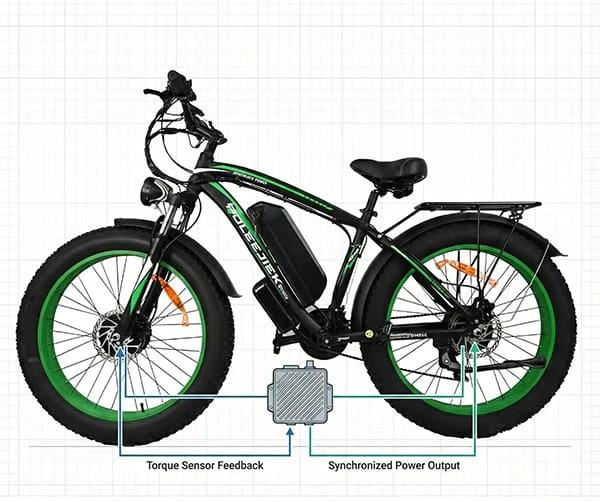
Pain Point 1: Front & Rear Wheel Slippage (Synchronization)
The Problem: In cheap dual motor systems, the front and rear controllers operate independently. If the rider turns a corner on loose gravel, the front motor might spin faster than the rear, causing the front wheel to wash out. This is a safety hazard that leads to liability issues for brands.
The Poleejiek Solution: We utilize a Single Controller, Dual Drive algorithm (or highly synchronized dual-controller communication via CAN bus).
- Torque Vectoring Logic: Our system monitors the current feedback from both motors in milliseconds. If the front wheel experiences a sudden drop in resistance (slippage), the system instantly reduces power to the front and shifts it to the rear.
- The Result: This mimics the AWD stability found in the automotive industry. It ensures that the dual motor electric bike feels planted and predictable, distinct from the "jerky" feeling of competitors.
Pain Point 2: Battery Overload (Voltage Sag)
The Problem: A 2000w ebike (peak) demands massive current. Two 1000W motors accelerating simultaneously can draw 40-50 Amps. Standard ebike batteries are designed for 15-20 Amps. When the draw exceeds the battery's C-rate capabilities, the voltage crashes (Voltage Sag). The bike shuts down to protect the battery, even if the screen says 60% charge remains.
The Poleejiek Solution: We engineer the power supply to match the demand.
- High C-Rate Cells: We source automotive-grade cells (Samsung/LG) specifically rated for high discharge.
- Dual Battery Parallel Architecture: Poleejiek Battery Tech Specs. Instead of draining one battery and then the other, our Dual Battery Converter allows both batteries to discharge simultaneously. This halves the strain on each individual battery cell, significantly reducing heat and eliminating voltage sag.
B2B Note: By using a parallel discharge system, you are not just selling range; you are selling performance consistency. The bike feels as fast at 20% charge as it does at 90%.
Single Motor vs. Dual Motor: A B2B Sales Script Guide
Your sales team or distributors need to know how to qualify leads. Pushing a dual motor bike on the wrong customer can hurt your brand's reputation for efficiency. Conversely, underselling a single motor to a hunter results in a return.
Here is a framework for your sales dialogue:
When to Recommend Single Motor?
- The Commuter: The customer rides mostly on pavement and bike paths.
- The Range Maximizer: The customer prioritizes 100km+ range over power. Single motors are generally lighter and more energy-efficient.
- The Budget Conscious: Entry-level price points.
When to Push Dual Motor (The Upsell)?
Use these two specific arguments to close the deal on higher-ticket units:
1. The "Safety" Argument (AWD)
Script: "You mentioned you ride through winter or on wet autumn leaves. A rear-wheel-drive bike can slip easily in those conditions. This dual motor ebike acts like an All-Wheel Drive SUV. The front motor pulls you through the turn while the rear pushes, keeping you upright. It’s not just about speed; it’s about control."
2. The "Redundancy" Argument (The Ultimate Reliability Pitch)
This is a massive selling point for hunters and backcountry explorers.
Script: "If you are ten miles deep in the forest and your chain breaks, or a motor fails, you are stuck pushing a heavy bike. With a dual motor system, you have built-in redundancy. If the rear motor hits a rock and fails, the front motor can still drive you home. It is a backup generator for your mobility."
Regulatory Considerations for 2000W Systems
As a responsible OEM partner, Poleejiek advises all clients on regulatory compliance. A 2000w ebike exceeds the legal limit for street-legal ebikes in many jurisdictions (typically 750W in the US, 250W in the EU).
To sell these legally, B2B buyers must consider:
- Off-Road Classification: Clearly labeling these units for "Off-Road / Private Land Use Only," which aligns perfectly with the electric hunting bike market.
- Software Locking: Poleejiek controllers can be programmed with a "Street Mode" (locking power to 750W/250W) and an "Unlockable Off-Road Mode" accessible only via display codes or app integration. This allows the user to be compliant on the road and powerful on the trail.
Conclusion: Winning the Market Through Differentiation
The era of "one bike fits all" is ending. To survive and thrive in the B2B ebike market, distributors must offer specialized solutions.
Do not try to sell a dual motor ebike to everyone. Sell it to the people who need it. Sell it to the hunter dragging a deer, the commuter living on a 20% grade incline, and the adventurer who demands redundancy.
Poleejiek dual motor technology offers you a platform that is mature, stable, and high-margin. It transforms the "complexity" of dual motors into a competitive advantage—giving your brand the reputation for power, reliability, and engineering excellence.
Ready to Power Up Your Product Line?
Words can describe torque, but they cannot let you feel it. We want you to experience the grip of our AWD system firsthand.
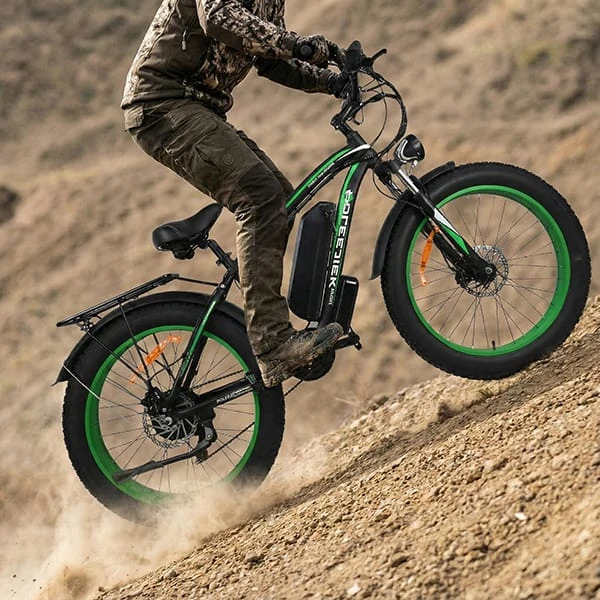
Would you like to see a stress-test video of our Dual Motor system climbing a 30-degree slope?
Contact Poleejiek Team for the Video & a Wholesale Demo Kit Quote
Further Reading (External Resources):



